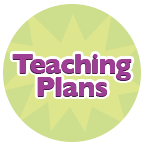Connect with the Student’s Message Listen and respond to the meaning behind the student’s communication.
Time: one 30-minute lesson or two 15-minute lessons
Materials: Emotions/Interactions Card #4
Grouping: whole class or small group
Assessment: Kindergarten Oral Language Assessment Scale
FOCUSING ON THE PICTURE
[Analyzing/inferring/making connections]-
Show students the picture and ask them to think about what is happening in the picture. Prompts
might include:
- What is happening in this picture?
What do you think is happening here?
What do you think the girl is looking at?
Why do you think that?- Do you ride a bike? When do you ride your bike? Where do you go?
- Invite students to share their ideas about the picture with a partner.
- Provide time for partner discussion and then select several students to share their thinking with the group.
[Analyzing/inferring]
- Offer prompts to stimulate discussion:
- Who do you think this girl is? Let’s give her a name.
-
Sheryl when you said that the girl was a picture from her mom, did you mean that her mom was taking a picture of her in this photo? Is this the photo that her mom took?
Who do you think is with this girl? Why do you think that? - Where do you think she is?
- What time of year do you think it is? Why do you think that?
GOING DEEPER
[Inferring/evaluating]- As students give their insights into the picture, clarify their responses as necessary and pose additional prompts that focus on the emotion in the picture:
- How do you think the girl is feeling in the picture? What clues tell you this?
- Are there different words we can use for ‘scared’?
- What message is the girl showing in this picture? How can you tell?
- What do you think the person with the girl is saying to her?
How do you think they are saying this, for example, gently, angrily, happily? Why do you think this?
You may conclude the lesson at this point and do the second part on the next day, or you may decide to continue and do Connecting and Predicting as part of the first lesson.
CONNECTING
Teaching Tip: If you decide to do Connecting and Predicting on the second day, begin your lesson by reviewing the picture with the students.
[Making connections]
- Ask students to make personal connections to the emotions and situation
in the picture. Prompts might include: - Have you ever ridden a bike? Did you enjoy it?
- Were you scared the first time?
- When do you wear rubber boots? What might the weather be like?
- Why do you think this girl is wearing a helmet? Why is this important?
-
When you said that you never rode a bike before, did you mean that you have only ridden a tricycle?
As students answer these questions, clarify the meaning of their responses.
PREDICTING
[Predicting]-
What do you think will happen next? Why do you think this?
Ask students to think about what could happen after the scene shown in the photograph.
- Ask students how they think others might feel about riding bikes…
- for the first time
- after they have a fall
- without any help
- with their friends
- Students could choose one scenario and act it out with partners.
LESSON EXTENSIONS
- Invite the whole class to be part of a shared writing experience based on this picture. Begin by writing a sentence starter like, ‘This girl turned around because…’ Brainstorm with students possible reasons why the girl turned around. Then select one idea and create a short story to explain why the girl turned around while she was biking.
- On chart paper write down ‘Green rubber boots are…’ Together with students brainstorm several ideas and create a poem together.
- Use the shared writings as shared reading texts or provide a copy of the shared writing texts in the reading centre so students can return to them at a later time.
FOLLOW-UP IN CENTRES
- Suggest to students that they draw a picture of themselves on an outing with another person. After they have completed their drawing have them tell a friend about the picture, for example, have them explain where they are, who is with them, and what they are doing. Invite their friend to retell the story afterwards. You may need to model this first.
- Using various materials like pipe cleaners, craft sticks, and blocks have students create a bike or another mode of transportation for example, scooter, skateboard, or tricycle. You may need to brainstorm different types of transportation with students before they begin. Have students explain their vehicle to a classmate.

